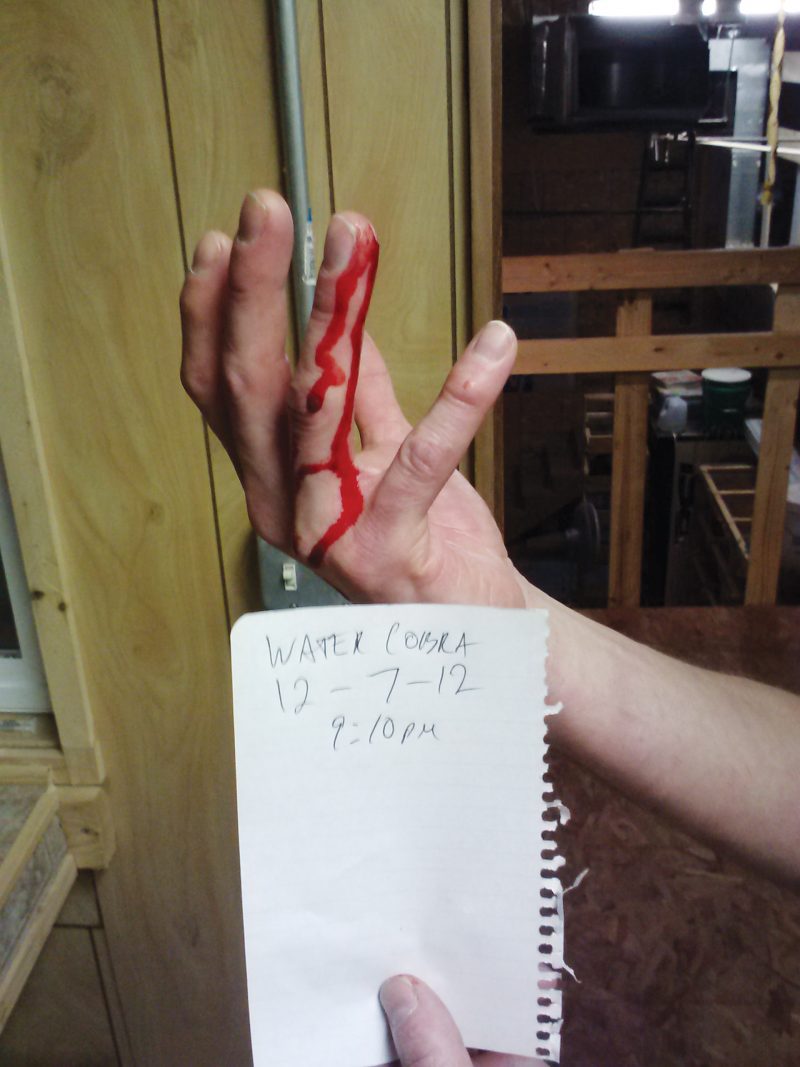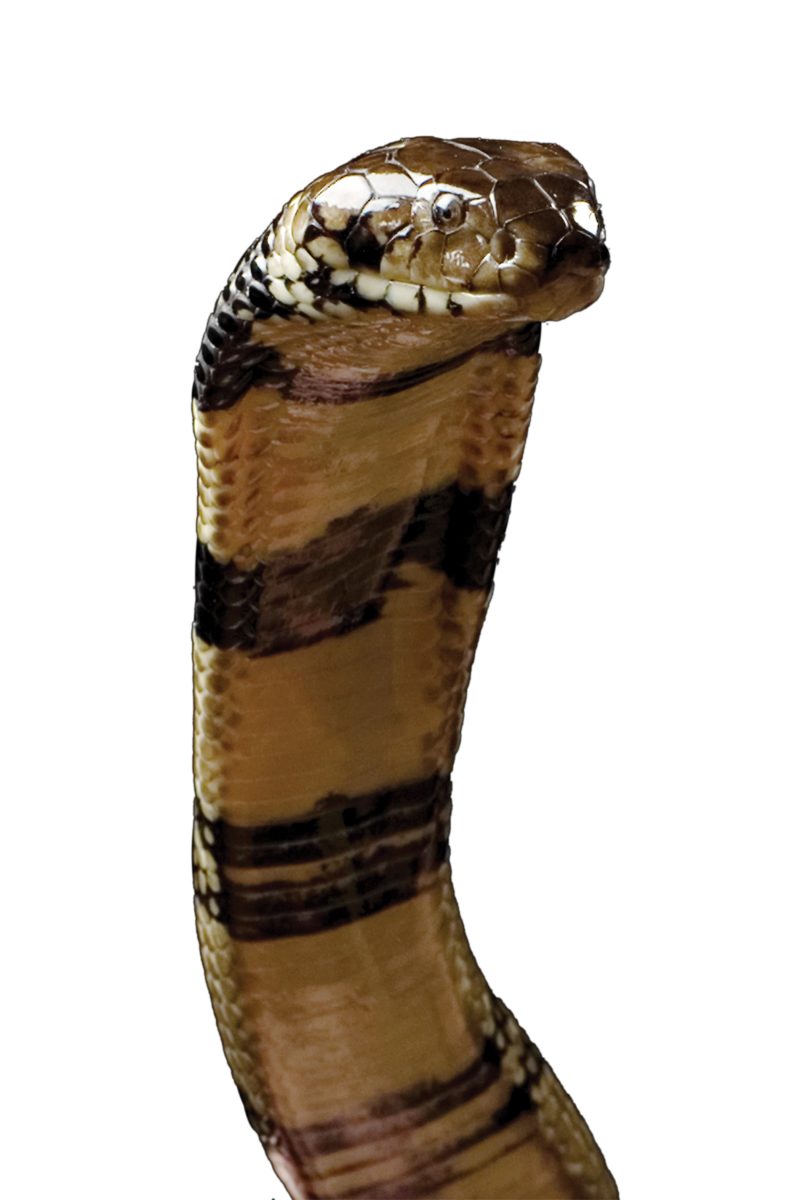On the way were still more beers, the night being young in Fond du Lac, Wisconsin, and Tim’s blood stanching where the cobra had bitten him. He wanded a good finger over the restaurant’s menu pictures and told me, “If it was you, dude, you’d be dead in this Applebee’s.”
If it was anyone else on this earth, they’d be dead. The African water cobra that had tagged him two hours earlier is so rare a specimen that no antivenom for it currently exists. Yet cobra bite and lagers notwithstanding, Tim looked fresh; he was well on his way to becoming the first documented survivor of that snake’s bite.

“Which reminds me,” he said from across the table, taking out his phone so I could snap a picture of his bloody hand. “For posterity. After tonight, every book is fucking wrong.”
It was on my account that he had done this, willfully accept the bite. Even though we’d only shaken hands that bright winter afternoon in the salted parking lot of a Days Inn. Tim Friede, the man from the internet who claimed to have made himself immune to the planet’s deadliest serpents. I’d come to test his mettle, to goad him into an unprecedented ordeal: five venomous snakebites in forty-eight hours.
Around us, young people were getting unwound in a hurry. The hour was fast approaching when the restaurant would flip off the apple portion of its lighted sign, clear out the tables and chairs, turn the edited jams to eleven, and allow for boner grinding on the floor space. Our server returned with the beers, and Tim looked up at her with his serous blue eyes, smiling, and said, “You never did card me. You have to guess.” She demurred. He continued: “I could be your dad.”
While Tim fumbled for an in with her, I considered the swollen hand he propped next to his head. Two streams of blood had rilled down and around his wristbone, reading like an open quote. He was a dad’s age, forty-four years old, but he appeared both strangely boyish and grizzled. He had an eager smile of small, square teeth. His hair was a platinum buzz. The skin over his face was bare and very taut; it looked sand-scoured, warm to the touch. Scar tissue and protuberant veins crosshatched his thin forearms, which he now covered by rolling down the sleeves of two dingy long-sleeve T-shirts. His neck was seamed from python teeth.
The snake that had done his twilight envenoming was Naja annulata, about six feet long and as thick as elbow pipe. She was banded in gold and black,...
You have reached your article limit
Sign up for a digital subscription and continue reading all new issues, plus our entire archives, for just $1.50/month.
Already a subscriber? Sign in





